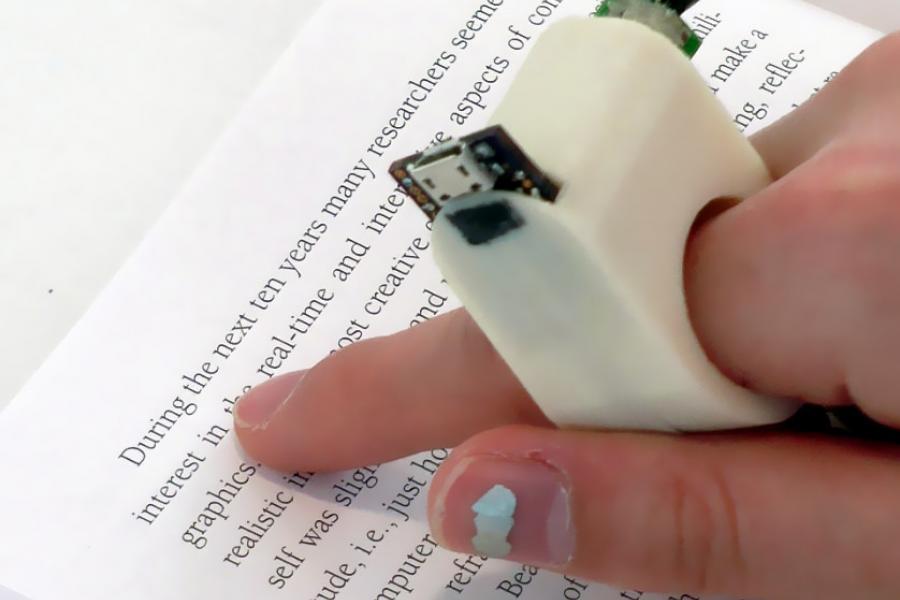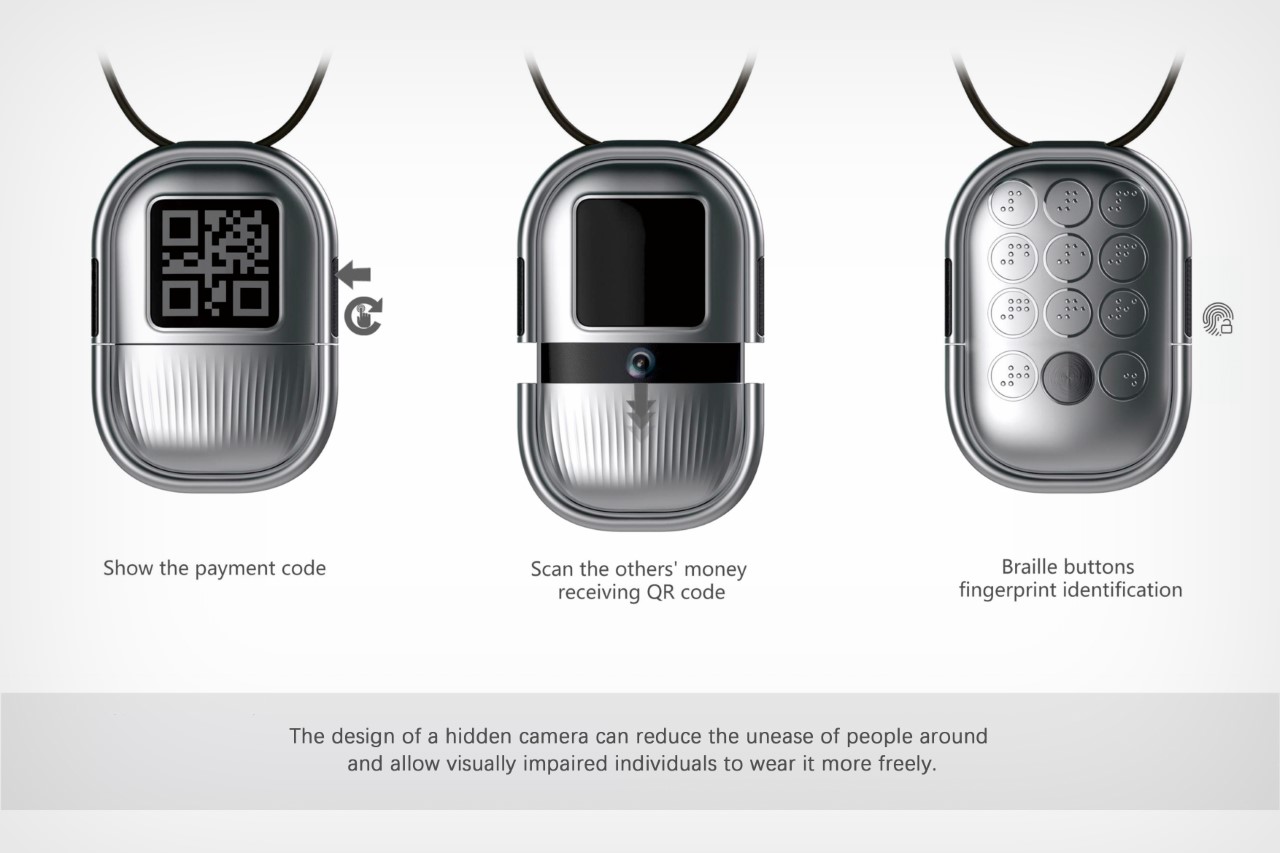Empowering Independence With Assistive Innovation for the Blind
The combination of assistive technology right into the lives of individuals with aesthetic disabilities represents a significant improvement in promoting self-reliance and self-sufficiency. From ingenious screen visitors to innovative clever walking sticks, these tools not only boost day-to-day navigating and interaction yet additionally equip individuals to involve meaningfully in different elements of life. As we check out the myriad benefits and real-world applications of these modern technologies, it ends up being important to examine the underlying variables that add to their effectiveness and the capacity for future developments in this vital area.
Summary of Assistive Technology

The growth of assistive modern technology is grounded in concepts of inclusivity and empowerment. Technologies in software application, hardware, and sensory enhancements offer individuals with options customized to their certain requirements. From screen readers that transform message to speech, to responsive tools that share info via touch, these devices change the method individuals involve with their environments.
In enhancement to sensible applications, assistive modern technology cultivates better social addition and involvement in different industries, including education and employment (Braille displays and notetakers). As r & d continue to progress, the potential for assistive modern technology to better enhance the lives of visually damaged individuals stays encouraging, leading the way for an extra equitable society where everybody can thrive
Sorts Of Assistive Instruments
A range of assistive devices have actually arised to support people with aesthetic impairments, each created to meet specific needs and boost daily functioning. These gadgets range from low-tech options to modern developments, providing diverse choices for users.
Low-tech gadgets consist of magnifiers and large-print materials that aid in analysis and writing. Braille devices, such as Braille stylus pens and slates, enable responsive analysis and communication. Positioning and flexibility help, like white walking canes, aid customers navigate their atmosphere securely.
On the greater end of the range, electronic zoom systems and display readers supply considerable support. Electronic magnifiers enable customers to expand message and images on screens, while display readers convert digital material right into manufactured speech, helping with accessibility to information on computers and smart devices.
Mobile phone applications additionally play an essential function, giving features like text acknowledgment and navigating help. Wearable innovation, such as wise glasses outfitted with increased fact, is arising as an encouraging tool to enhance situational recognition.
Advantages of Assistive Modern Technology
The integration of assistive technology dramatically improves the quality of life for individuals with visual impairments. These modern technologies encourage customers by promoting freedom, allowing them to browse their settings extra efficiently and carry out day-to-day tasks with greater simplicity. Screen readers and magnification software permit people to gain access to digital information, cultivating expert and academic opportunities that may have previously been out of reach.
Furthermore, assistive devices such as clever walking sticks and GPS applications offer real-time navigating assistance, boosting movement and safety and security. This enhanced autonomy not only boosts self-esteem however additionally motivates social interaction, permitting users to take part even more fully in their communities.
Assistive modern technology likewise helps with communication, aiding individuals get in touch with others with voice recognition and text-to-speech applications. This capacity is vital for keeping connections and accessing critical details.
In addition, the customization options readily available with lots of assistive modern technologies ensure that users can tailor gadgets to their details requirements, additionally boosting usability and efficiency. Generally, the advantages of assistive modern technology for people with visual half moon reading glasses disabilities are extensive, advertising an extra inclusive culture where every person can pursue their goals and desires.
Case Researches and Success Stories
Highlighting the transformative effect of assistive modern technology, numerous study show exactly how individuals with visual disabilities have actually successfully incorporated these tools right into their day-to-days live. One compelling instance includes an university student that utilized screen analysis software to browse on-line sources and academic materials effectively. This technology not just facilitated her education and learning yet additionally improved her confidence in getting involved in discussions and group projects.
Another case research includes a specialist who employs a smart device application designed for navigation and object acknowledgment. By using this application, he has actually restored autonomy in both his individual and workplace, enabling him to commute individually and involve with coworkers much more properly.
Additionally, a retired person shared her experience with braille e-readers, which allowed her to access a large variety of literary works and remain gotten in touch with her neighborhood through book clubs.
These success tales highlight the important duty of assistive innovation in cultivating freedom, enhancing top quality of life, and promoting social assimilation for individuals with aesthetic problems (AI-powered visual aids). By welcoming these cutting-edge tools, customers can overcome difficulties and confiscate opportunities that add to their individual and professional fulfillment

Future Trends in Assistive Innovation
Technology in assistive technology is poised to redefine the landscape of assistance for people with visual problems. Emerging patterns emphasize the combination of artificial intelligence (AI) and artificial intelligence, which improve the performance of tools that help with navigation and details availability. AI-driven applications are now capable of interpreting aesthetic data in real-time, making it possible for customers to engage with their setting much more separately.
Moreover, the growth of wearable innovation is progressing swiftly. Smart glasses geared up with augmented fact (AR) can provide audio summaries of environments, transforming just how customers engage with public rooms. These tools not only promote freedom however additionally foster social inclusion.
In Addition, the Web of Things (IoT) is making homes smarter, click here to read allowing for smooth connection in between day-to-day appliances and assistive gadgets. This connectivity equips customers by making it possible for voice-activated controls and automatic feedbacks tailored to private requirements.
Final Thought
In final thought, assistive innovation plays a critical role in empowering people with aesthetic impairments by enhancing their freedom and interaction with their environments. The varied series of devices and applications offered not only assists in navigating and communication however additionally advertises social combination and possibilities for expert and personal growth. As advancements proceed in this area, the capacity for enhancing the quality of life for those with aesthetic impairments will certainly increase, cultivating better Home Page autonomy and empowerment.
